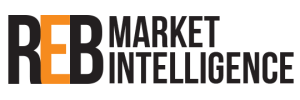Well, quite a bit has happened since my last report, hence the quiet couple of months.
Extended Producer Responsibility feedback on reforms have begun, PRN consultations have been run and all the while the PRN system continues to operate as it should. PRN prices have slowed down a little after starting to run away, assisted by the recent monthly figures, but plastic remains high with the ongoing work the Environment Agency is doing to suspend and cancel reprocessors.
Paper PRNs jumped considerably over the past few months, peaking at £13. In recent weeks, these have eased off to £11.50 and look like they will continue to trend downwards. The monthly figures are above the run rate we need for UK compliance, and even though compared to this time last year we are down by 5.5kt, the current price is 5 times what it was in 2021, so will help keep support material movement. Alongside that we know there is a financial challenge globally, with inflation and reduced consumer spending as a result. The battle to get hold of the material remains and while it may be a challenge for the traders to fill orders, the PRNs are still being generated regardless.
Like paper and other material streams, the plastic price has climbed reaching just over £230. Even with a good few monthly figures being over the monthly run rates, the price climbed and climbed till it plateaued at £230. This has had been impacted in two ways. As mentioned, the Environment Agency have started suspending and even cancelling some accreditations in the past two months, which will only help the system become a truer reflection of itself. Conversely, more plastic recyclers are now looking at recycling more packaging, as the commercials begin to stack up with a high PRN price, potentially increasing the amount of PRNs being generated.
Glass has had a strong month, with only a slight dip compared to last month and compared to this time last year. This dip is mainly in glass other, with remelt performing well to get back on track. As a result, glass other is trading at £55, and remelt at £115, with prices likely to increase in this ever-tightening market for other and a chasing market in remelt.
Aluminium has had its strongest month to date. It is still a little off where it needs to be to comply, but that’s not to say that material is not out there to obtain. It is and PRNs are being generated, but not sold. As a result, prices are at £60 and look likely to remain here in the short term.
Steel has had a low month, but it is the most volatile market in term of monthly figures, so peaks and troughs are taken with a pinch of salt. That hasn’t stopped the market peaking at £31 in May, before easing off down to £28. It is now back up on the climb again.
Wood has kept in line with paper and increased, steadily trading at £9. The monthlies were less than previous months, both this year and last, but at the current rates we will comply by Q3 in wood, driving the price down.
Ben Richardson is director of procurement at Valpak







